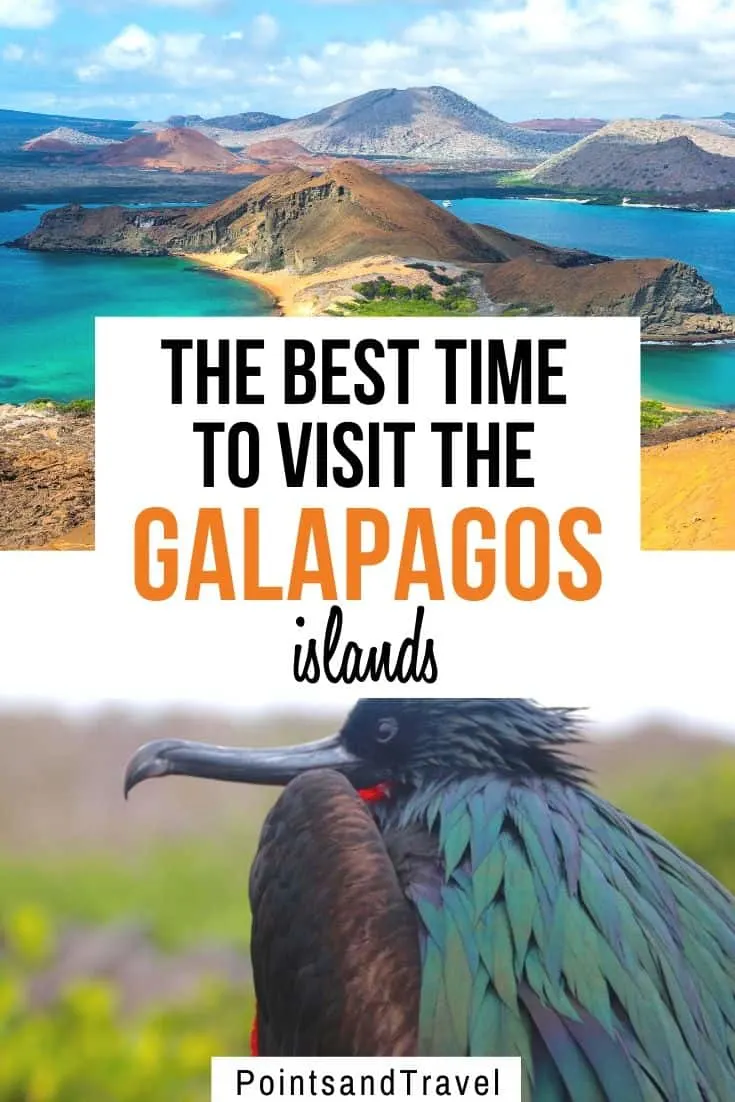The Galapagos Islands are some of the most unique islands on the planet and it is no wonder that people want to visit these gorgeous lands owned by Ecuador. So many animal lovers and birders can’t wait to see the flood of animals that flock to this place. As I mentioned in my Galapagos Islands By Cruise: A Complete Guide article, many of these animals are endemic to the islands, however, there are many others that are simply migratory. So just when is the best time to visit the Galapagos Islands?
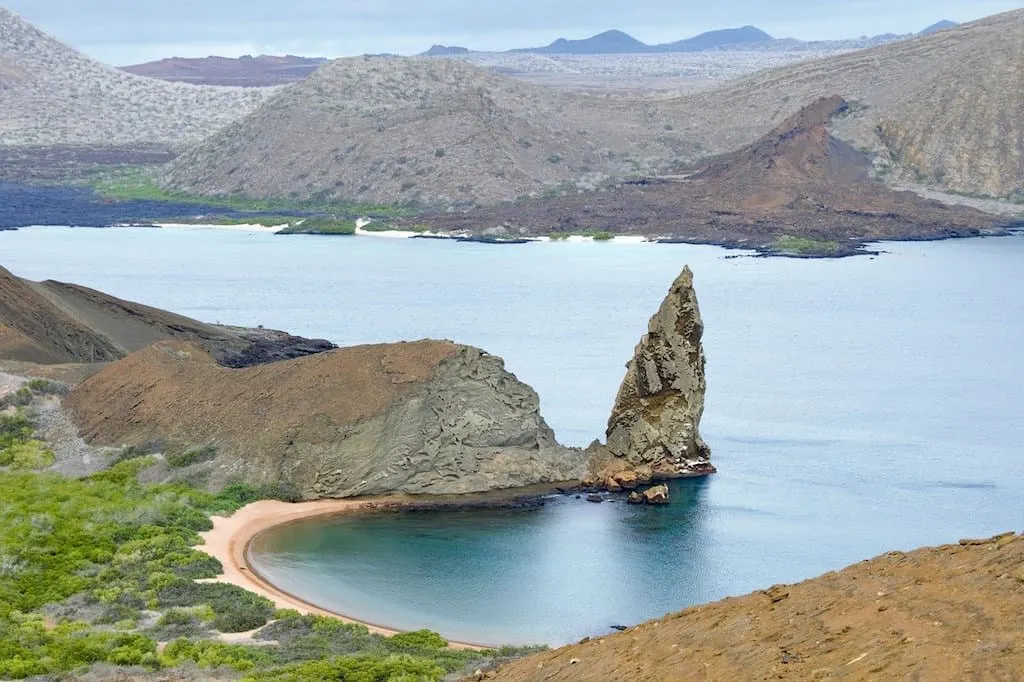
The Galapagos Islands have a dry and a wet season and experience a subtropical climate despite being along the equator. The cooler dry season is from June to December. And the warm and rainy season lasts from December to June. The first part of the year is always warmer than the cloudier months at the end of the year.
Best time to visit the Galapagos Islands
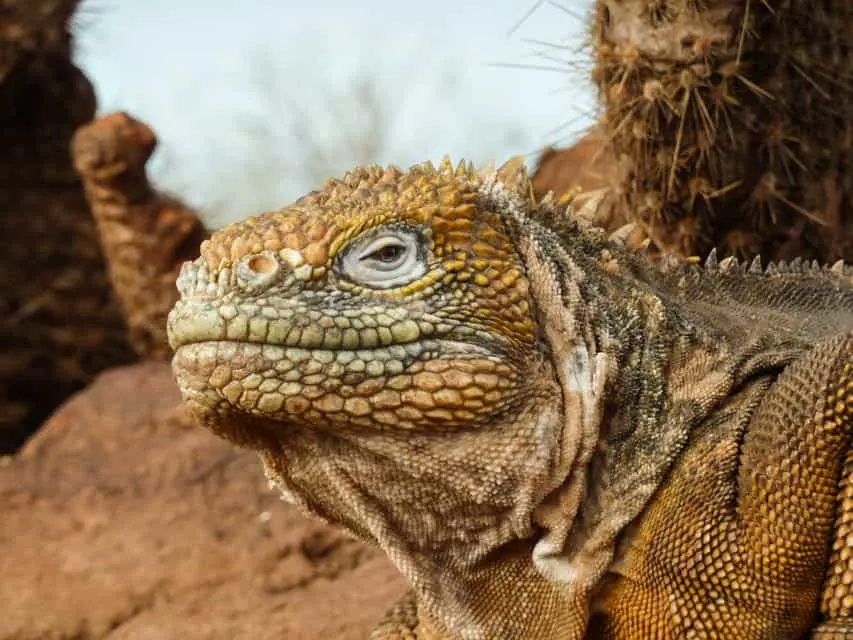
What I have done is break the year by months with categories such as what wildlife you can experience during particular months, what the weather will be like, and what it is like to price out a trip there during those months’ timeframe.
The time of year that you choose to visit the Galapagos Islands can vary depending on the type of wildlife that you want to see, what your interests are, and what your budget is. Certain animals breed better during the dry season than they do during the rainy season and vice versa. My suggestion is to make a list of the animals you cannot wait to see and then find out when their breeding season is then you have chosen your time to visit!
The Best Time is the shoulder season of Oct/Nov & April/May
I have now been to the Galapagos three different times for over a month and I would choose:
- Any four weeks in either October or November, as this time frame has rising temperatures, shoulder-season prices, and lower crowd numbers
OR
- Any four weeks in either April to May, as this time frame has the subtropical warmth you want with less rain, some shoulder-season pricing, and lower crowds numbers
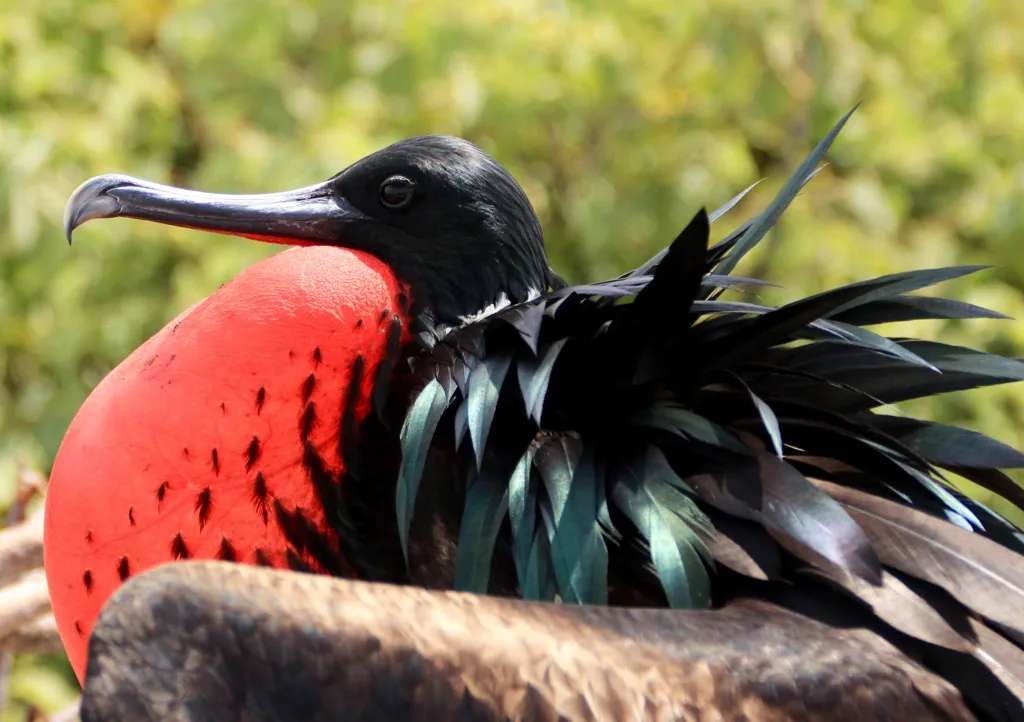
PRO TIP: Check online for mating times of popular animals and temperature of waters, since these two things can make a huge difference in the quality of your vacation.
A Month to Month Guide: Best Time to Visit
January & February
Wildlife:
Naturally, the birds are very active at the beginning of the year, as this is the time when many of the mother birds begin nesting. You will see many birds, such as the Nazca booby, large frigate birds, flamingoes, the flightless cormorant, and even the Galapagos dove might be out and about. Even ducks and penguins might be visible during this time. The Galapagos Penguins are the only place in the Northern Hemisphere where you will find them year-round.
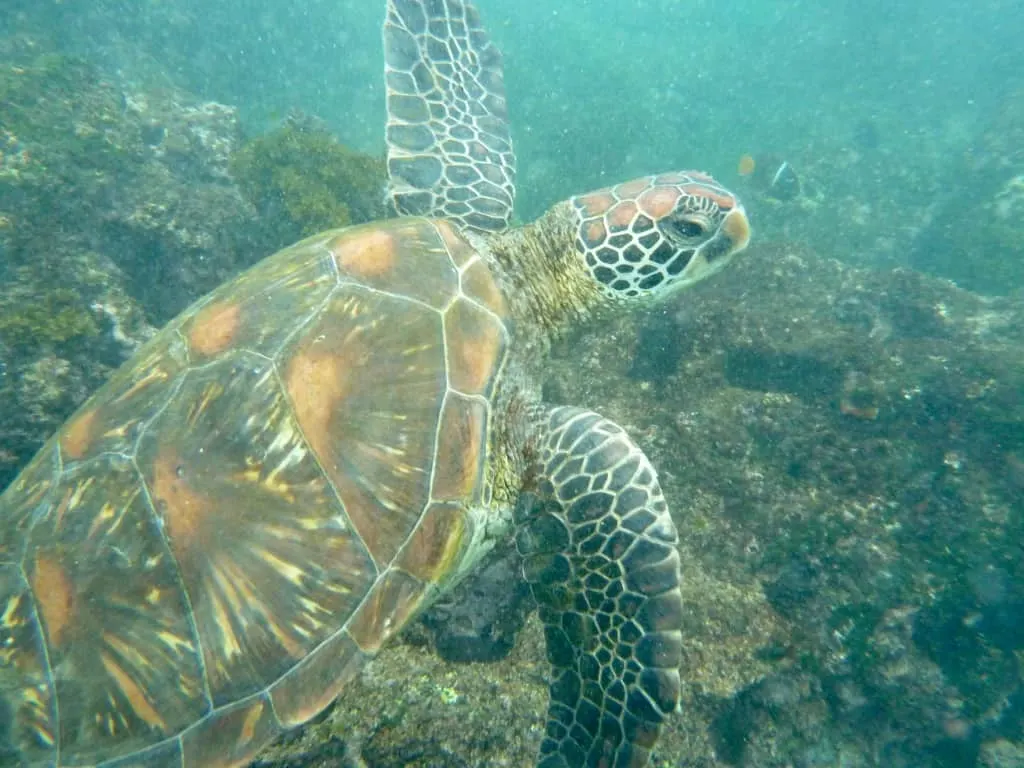
As far as the underwater animals, both land and marine iguanas will be nesting, as will the green sea turtles. Underwater visibility is at its best in January all the way to April. In January and February snorkelers have much better underwater visibility as they would between May and December, so January and February is a good time to choose to come for underwater activities and snorkeling.
Weather:
January and February are similar in terms of weather and rainfall. Each month sees an average temperature of about 85 degrees Fahrenheit with lows in the low to mid 70’s for the air temperature. The sea temperatures are the highest they will be year-round in the mid-’70s, so this is one of the best times for snorkeling, paddle-boarding, kayaking, scuba diving, and swimming in the water. Clear mornings and afternoon showers are common this time of year.
Prices & Booking:
January is one of the tourism peaks in the Galapagos, but prices will begin to lower towards the end of the month and into February. As you get further and further into the new year (and away from the winter holidays), booking a trip will get easier and cheaper.
March & April
Wildlife:
March sees highly active marine life, especially seeing the dolphins following the bow of the boats! Green sea turtles and land iguanas will be hatching eggs. Watch for hammerhead sharks, stingrays, and manta rays in the water.
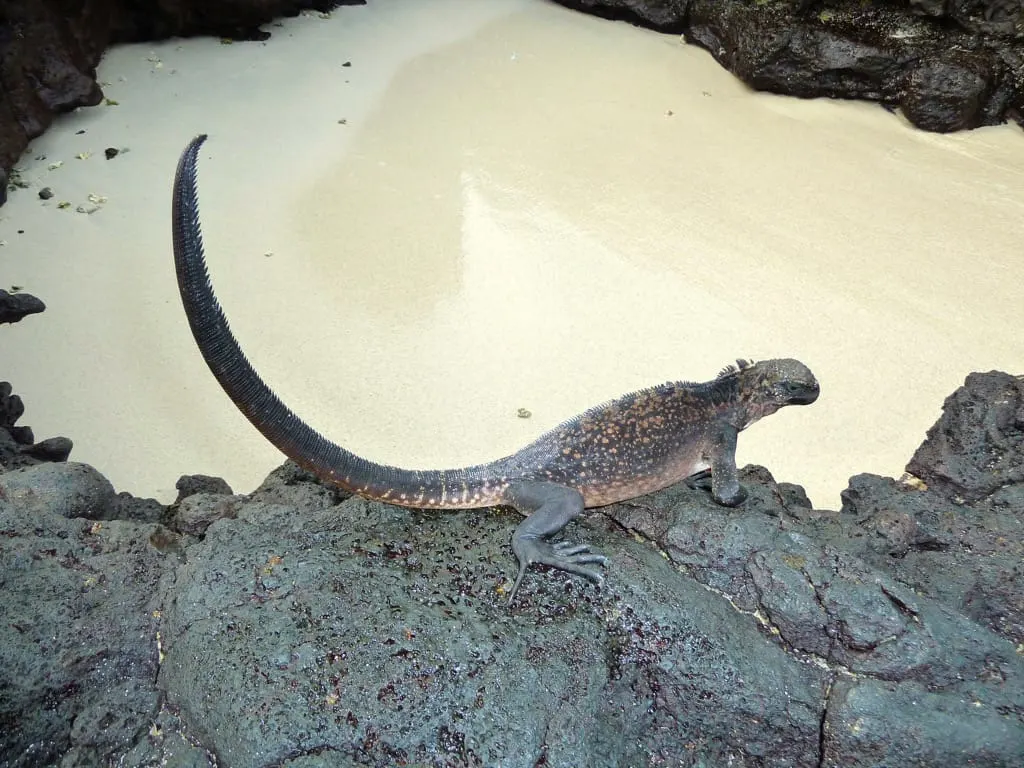
Meanwhile, on land, waved albatrosses begin to show up to mate. Mosquitos may be rampant though, so bring insect repellent.
Weather:
March has the highest amount of rain and April is the second-highest in the rainy season, as March sees about 2 inches of rain and April sees about 1 1/2 inches of rain. Both months experience high temperatures in the upper 80s with lows in the low-70s, and the sea temperature will continue to be at their warmest in the 76 degrees Fahrenheit range. This tends to make the weather humid and muggy.
Prices & Booking:
Due to the high amount of rainfall and humidity, there are far fewer tourists. However, if you’re willing to tolerate the humidity and afternoon showers, most bookings are cheaper during this time. Late April is a great time to book!
Best Time to Visit the Galapagos Islands
May & June
Wildlife:
May is exciting times in the Galapagos because you have a chance to experience the blue-footed booby doing its mating dances – standing on one leg and whistling, then standing on the other leg and whistling again. It is a sight to see for sure! During this time, many of the birds are nesting. Land iguana eggs are hatching!
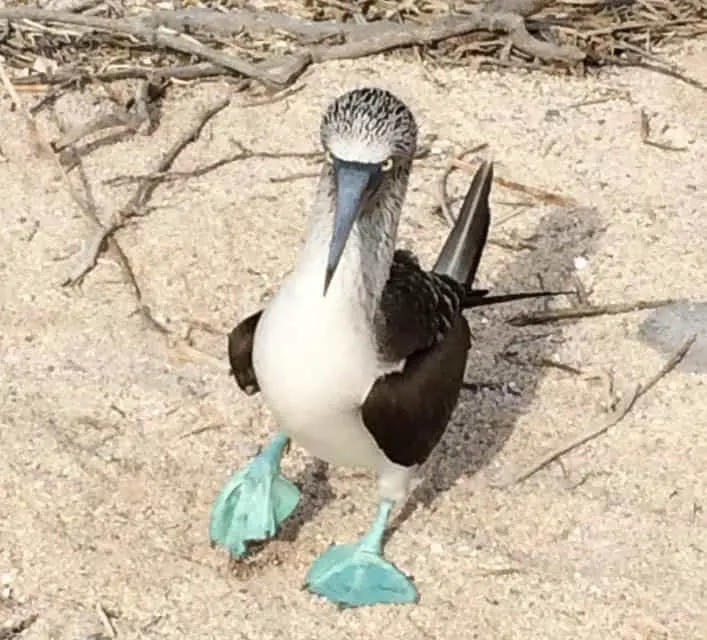
Weather:
May is the end of the rainy season. It only has about .75 inches of rain during this month and June only has about .25 inches of rain. In fact, June is one of the driest months in the Galapagos. Finally, the temperatures start to decrease to the low 80’s or upper 70s. And the lows of the evening drop slightly to the low 70s with sea temperatures around 74 on average. The flowers begin to bloom! June marks the beginning of seasonal changes in the Galapagos. The skies become cloudier, there are more wind and cooler waters with more waves. Humboldt Current brings cooler conditions.
Prices & Booking:
Tourism begins to grow by the end of May and honestly, it is a great time to go. However, prices do start to increase. I would book during early May and skip late may and early June as the school kids and their parents begin to arrive.
July & August
Wildlife:
Birds like waved albatrosses have arrived on Espanola Island. Frigate birds and penguins continue to breed and nest in the summer months. But we have new arrivals with the Red-footed boobies and Nazca boobies. July is a great month to see the fascinating mating ritual of the blue-footed booby. The Galapagos giant tortoise will be out and getting ready to lay its eggs!
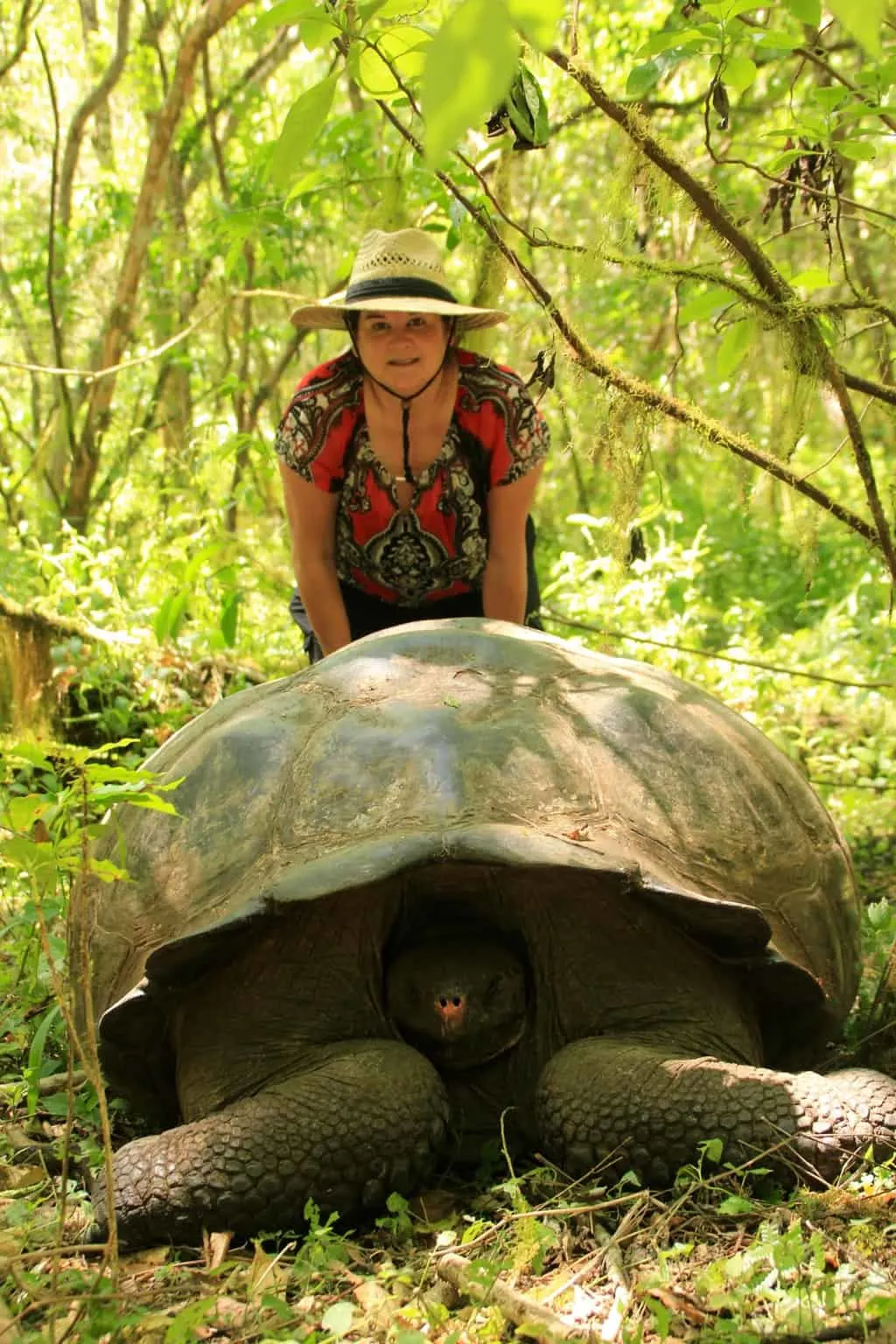
For the wildlife in the sea, humpback whales come up from the south as part of their migration pattern! You might even see dolphins, too. More sea lions will show up with the start of their breeding season.
Weather & Precipitation:
July is only slightly wetter than the month before with about half an inch of rain as we enter into the dry season. While August has less rain than July with a quarter of an inch of rain on average. Temperatures max out in the high 74-76s, with lows in the 66 F range in July and 64 F in August. August is the coldest month in the Galapagos. Sea temperatures drop to the low 70s and mid to high 60s. August also has the oldest water temperature. Clouds are common in July and August, as is the sun in equal amounts! The wind picks up to its strongest in August.
Prices & Booking:
These two months make up the Galapagos’ second tourism peak as the summer is when families plan trips to come here. It would be a good idea to plan ahead in advance to get the best deals for availability and prices.
September & October
Wildlife:
Alongside the many birds which continue nesting into these months, the Galapagos giant tortoise can still be seen laying its eggs. You’ll even see a large number of penguins under the water in September.
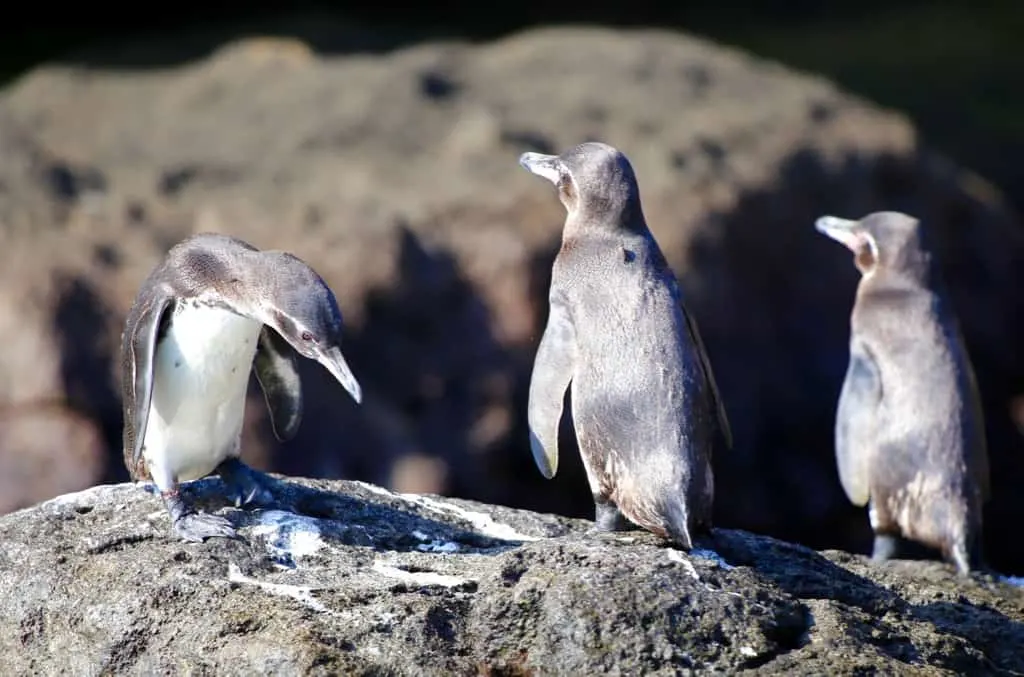
The wildlife in the ocean has sea lions pretty much everywhere around the islands, as they start to have their pups in October. There should also be more whales and dolphins along the coast. For scuba diving, this is the best time to see whale sharks migrating through Darwin and Wolf islands.
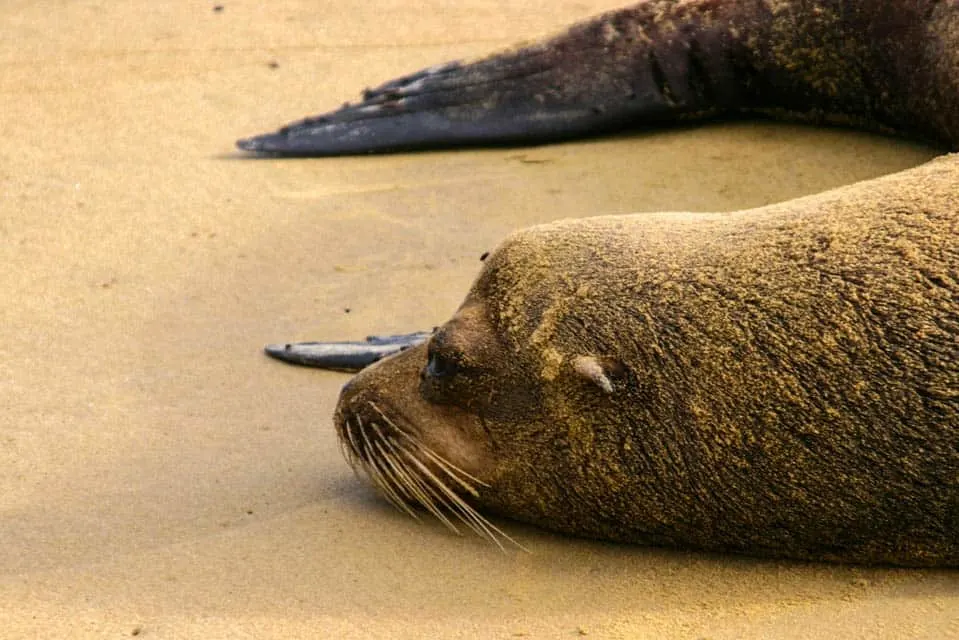
Weather & Precipitation:
This is the colder time of the year in the Galapagos with maximum temperatures on land in the 76-77 F range with sea temperatures in 68-70 F range. The islands will only see a half-inch of rain or less in September and a quarter of an inch in September, so there will be some drizzle. Winds might cause some rough seas for the fisherman and for cruises!
Prices & Booking:
Typically, when school is back in session, the islands begin to slow down with its visitors. Consequently, prices become more reasonable and hotels and cruises should have availability.
Best Time to Visit the Galapagos Islands
November & December
Wildlife:
This is the time the flamingoes will arrive and will be nesting. Baby albatross chicks have hatched and are on the islands as well as the baby Blue-footed boobies! You will see plenty of them with their parents! They will soon learn how to fly as they become stronger. The Galapagos giant tortoise typically hatches their eggs in December, while green sea turtles will begin mating.
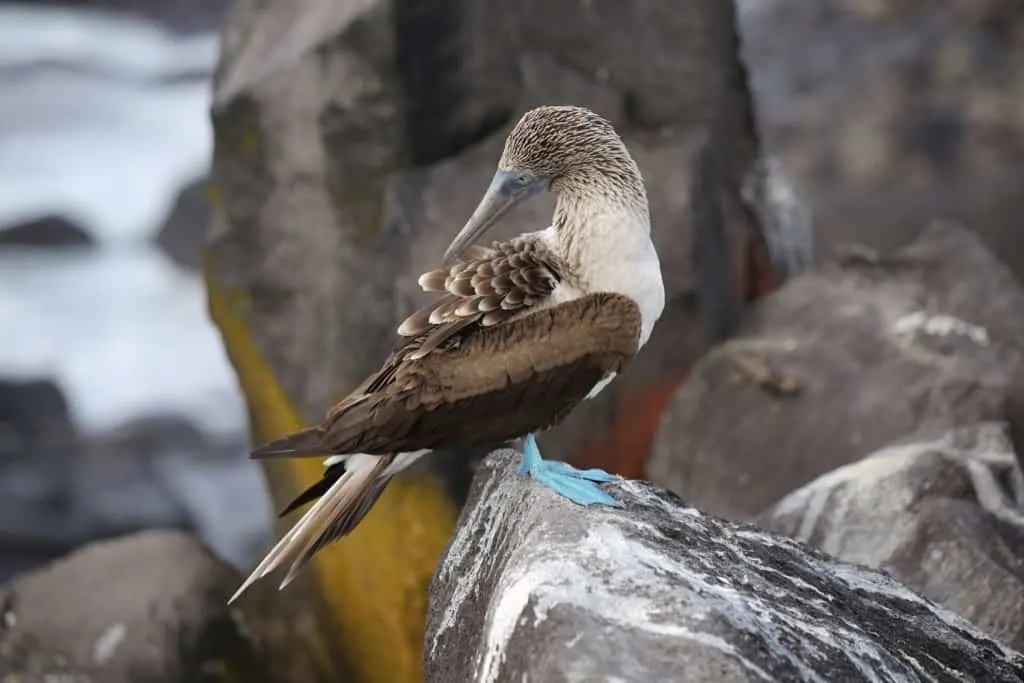
The wildlife close to the sea such as the land and marine iguanas will be mating, It may be possible to see the marine iguanas becoming more colorful as they try to impress potential mates. The Green sea turtles will begin mating as well.
Weather & Precipitation:
High and low temperatures will begin to edge back up again in October and November as the dry season wraps up and the year begins shifting back towards another rainy season. You’ll get high 70’s as max temps and upper 60s as lows on land with sea temperatures heading back towards the low-mid 70s. You’ll only see a quarter to half-inch of rain over the course of a month. This is the perfect time to visit if you want some warmth without the wet.
Prices & Booking:
Tourism in November and December remain low, as these months are still part of the cloudy, dry season. But soon it will be getting warmer, as the crows and prices rise close to the end of the year when kids are out of school for a holiday break.
No matter what time of year you visit the Galapagos Islands, you will surely experience the diversity that makes up the wildlife in the Galapagos Islands.
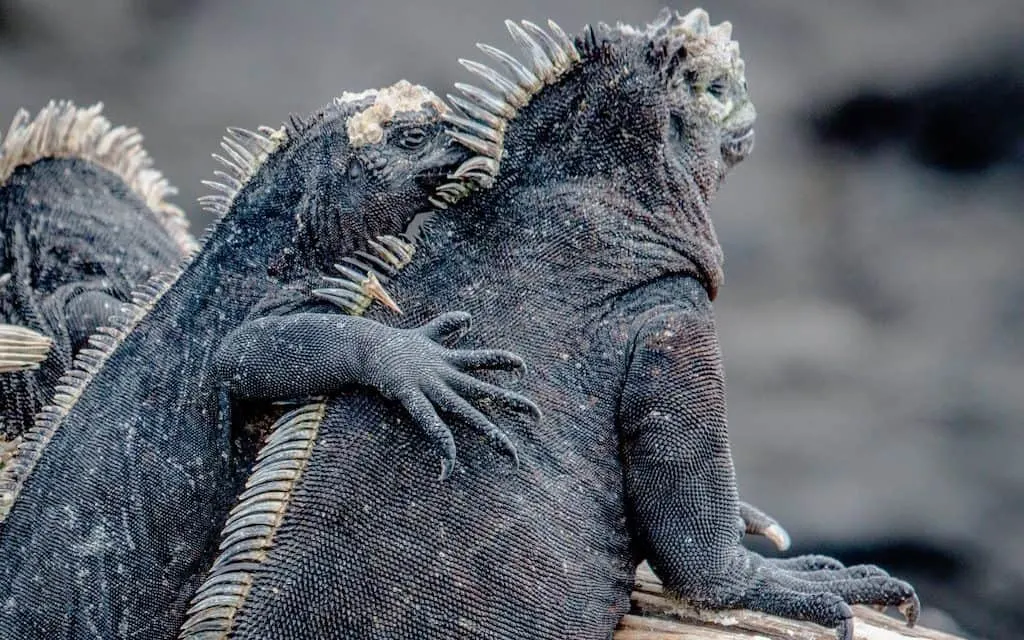
Interested in reading about Galapagos Islands?
Galapagos Scuba Diving at its Finest Hour!
The Galapagos Islands – Birds of a Feather
Through the eyes of a Galapagos Gringa
Animals of the Galapagos Islands
Delicious Foods in the Galapagos Islands
Post Office Bay, Floreana, Galapagos
Disclosure: As is common in the travel industry, I was provided with accommodations, meals, and other compensation for the purposes of review by Ecoventura. While it has not influenced my review, PointsandTravel.com believes in full disclosure of all potential conflicts of interest. All Photos were taken by the author/or were given permission from the photographer. Affiliate links may be located in this article.

